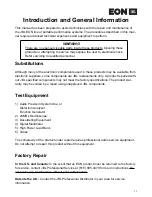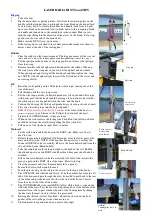
Operating instruction and technical description
EV tester type 1 and type 2 - 2.0
©
Walther-Werke Ferdinand Walther GmbH
Seite 10 von 12
4.8 Simulation of vehicle status B, C, D and display of charging voltage
The vehicle status can be simulated by means of different switch positions of the switches B, C and D.
Status B
Switch B
Ein/ON
Status C
Switch
B and C
Ein/ON
Status D
Switch
B and D
Ein/ON
Table : EV status and switch position
On single-phase charging devices, the switched-on charging voltage is only indicated at LED L1.
On three-phase charging devices, the switched-on charging voltage is indicated at LEDs L1, L2 and L3.
Photo: Switch for EV status simulation
By operating switch B, vehicle status B is simulated. In this status, the electric vehicle is connected to the
charging device and is ready to be charged (PWM signal: 9 V).
By additionally operating switch C (i.e.
B and C
), the electric vehicle requests charging current and it is
switched on by the charging device. Please note that no thereby no charging power is withdrawn. The electric
vehicle which is simulated by the EV tester would be charged now (PWM signal: 6 V)
By operating switch D instead of C (i.e.
B and D
), the electric vehicle requests ventilation during the charging
process (PWM signal: 3 V). The charging device has to react accordingly.
Frequency and pulse width of the PWM signal remain constant during simulation.
4.9 Measuring of PWM signal (CP test jack)
On the BCN female jack, there is the PWM signal available for display and measuring. It can for example be
evaluated with an oscilloscope.
Attention:
This measurement has to be carried out "unearthed, without PE". Otherwise checking the PE connection
(chapter 4.6) is not possible.






























